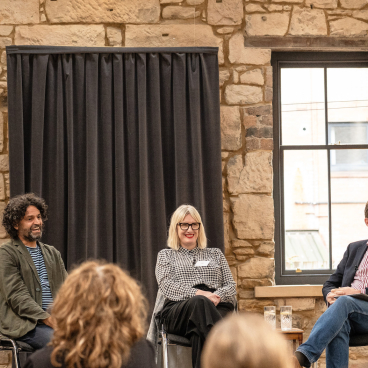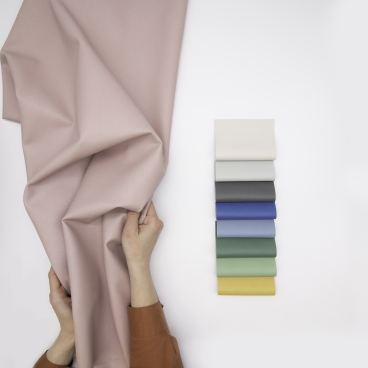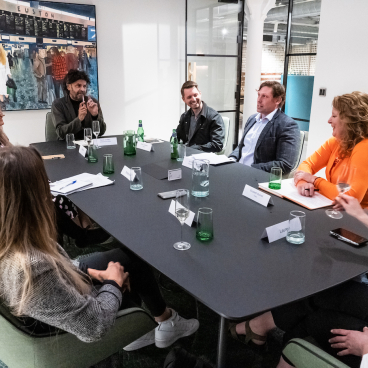What is the technological standard in a forward-thinking workplace?
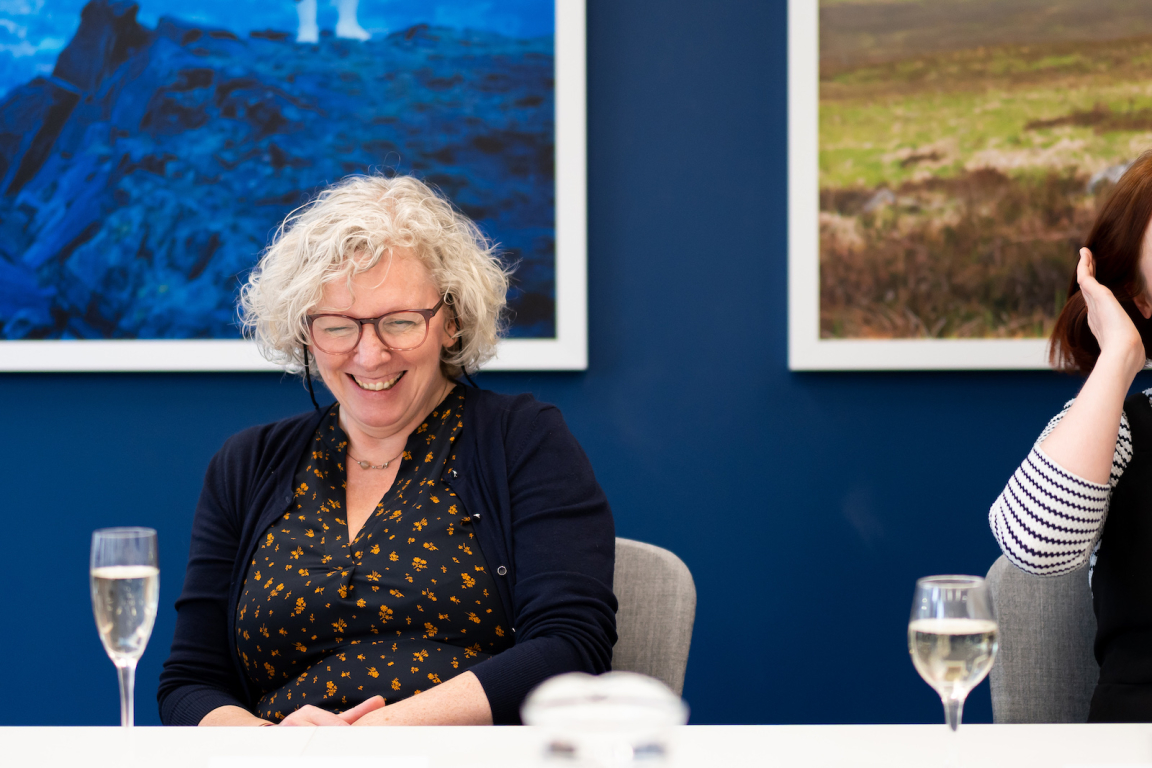
Continuing our conversation around technology and its place within the built environment, and more specifically - in the workplace - we explored the topic and surrounding themes in more depth in our recent roundtable discussion in Glasgow.
We brought together a group of extremely well-placed professionals adopting technology as a tool for both their clients, and their own teams, and all with views on how tech can, and is, playing a role in the way our working environments run.
In discussion with Material Source Studio Director, David Smalley at AECOM's Glasgow HQ (special thanks to the team for hosting us), our roundtable guests covered everything from data that monitors, to data that facilitates inclusivity; what it truly means to work hybrid; and the impact of technology in line with changing office culture. Here's an overview of the hour's key points...
Our guests

Christopher Townsend, Director, RKA
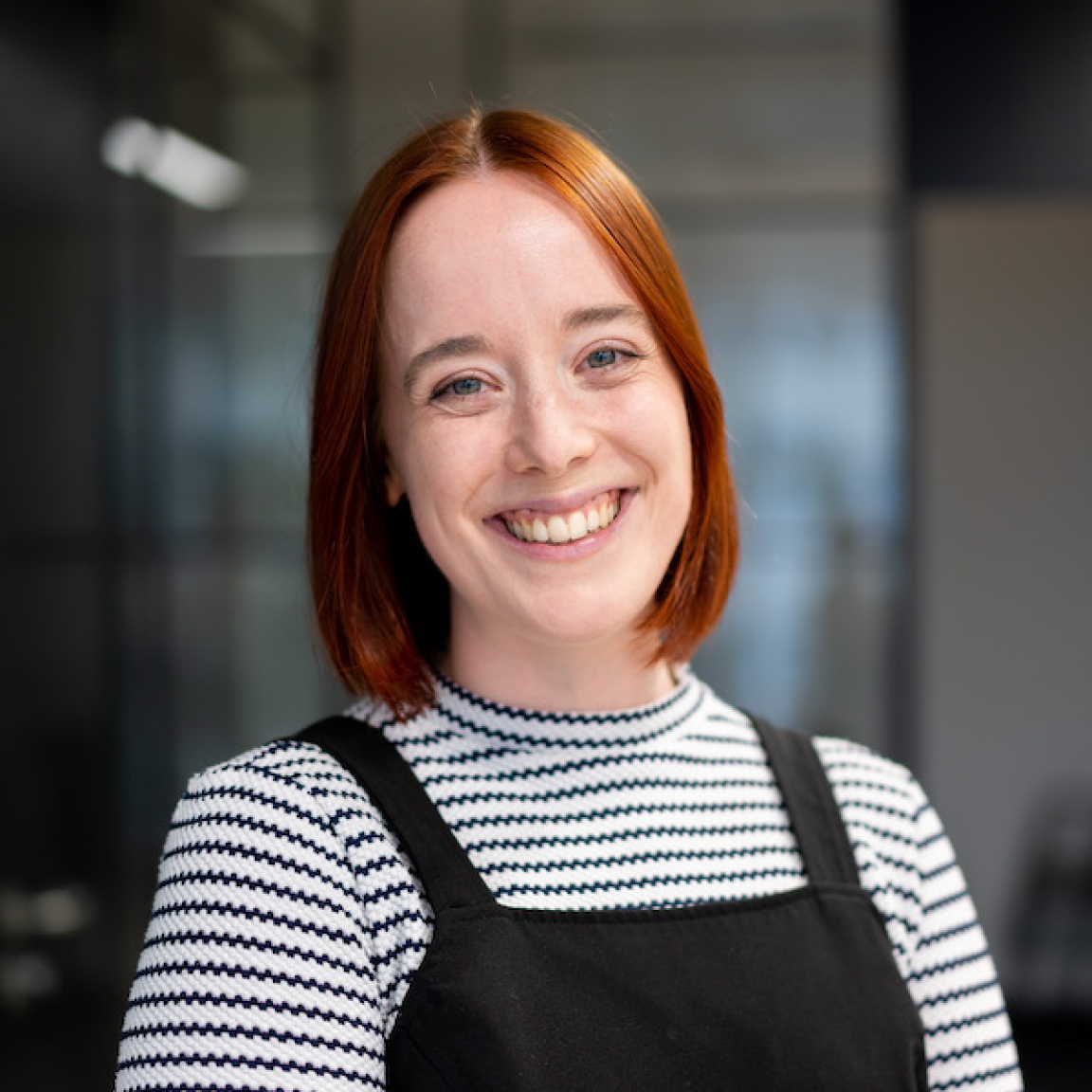
Harriet Powell-Hall, Project Architect, AECOM

Craig Whittet, Head of Department, Product Design Engineering, Glasgow School of Art
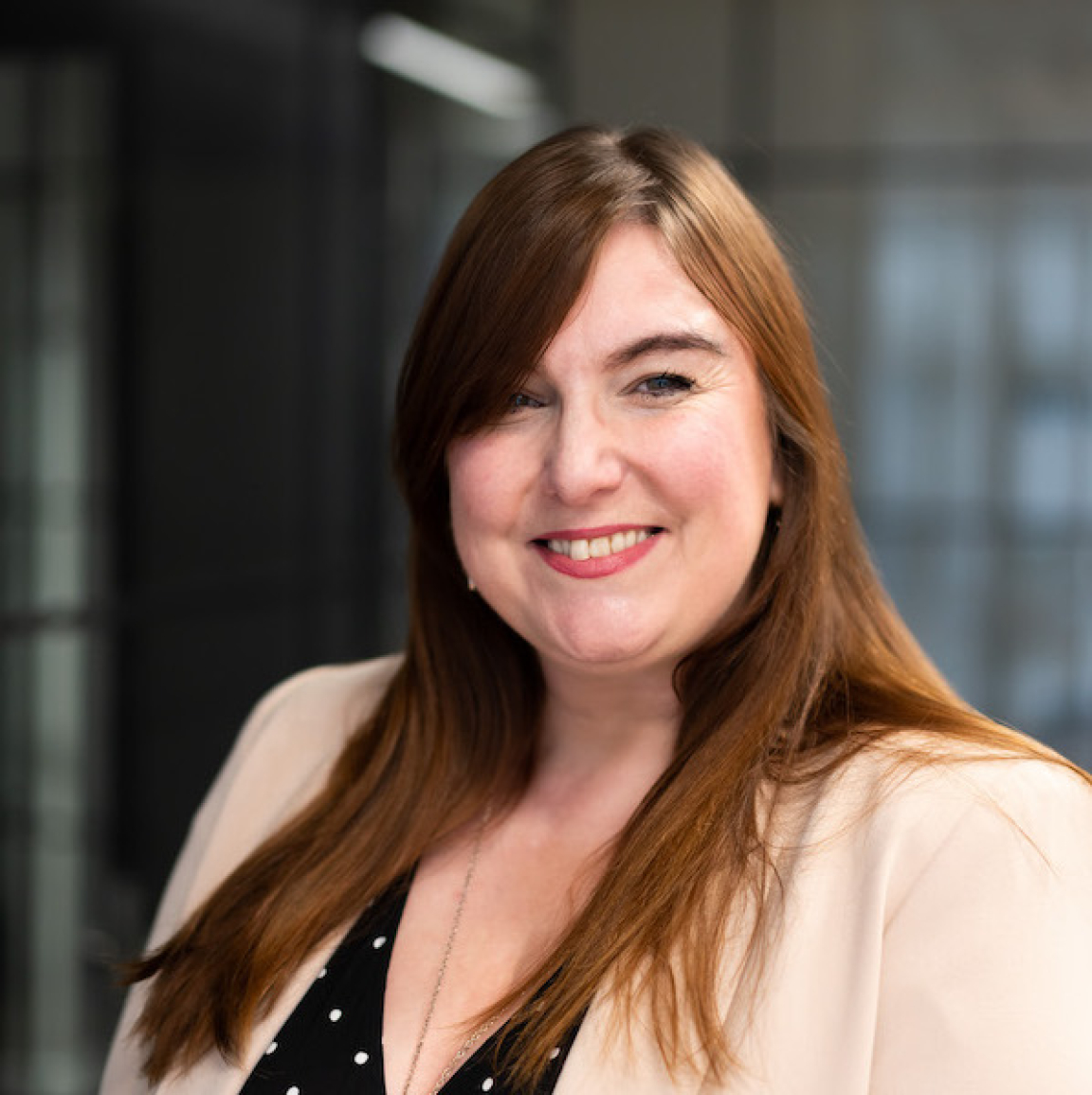
Lindsey Wilson, Senior Interior Designer, Atkins

David Macintyre, Associate Interior Designer, c2 concepts
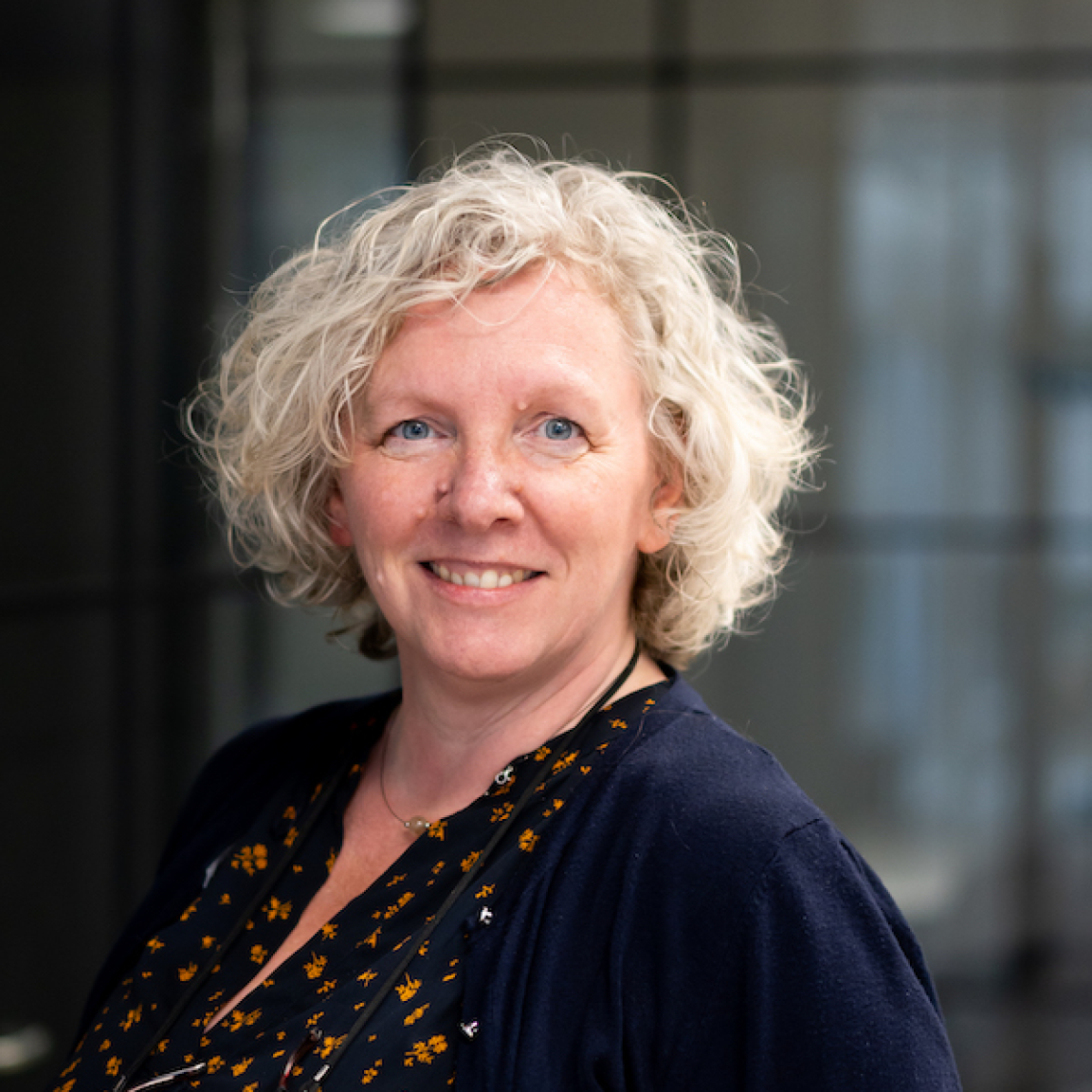
Lorraine Robertson, Director, HLM Architects
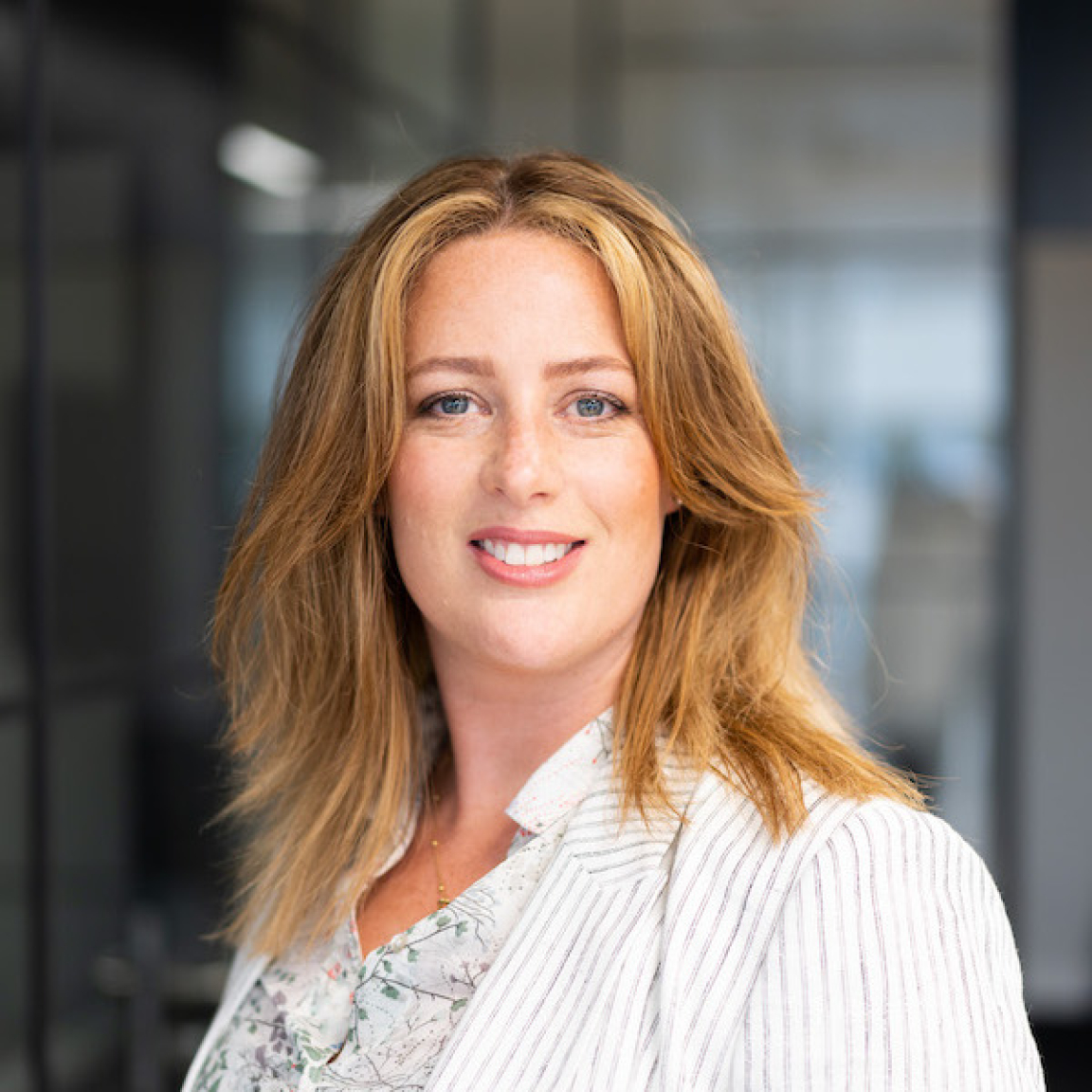
Vicki Richmond, Marketing Director, CDUK
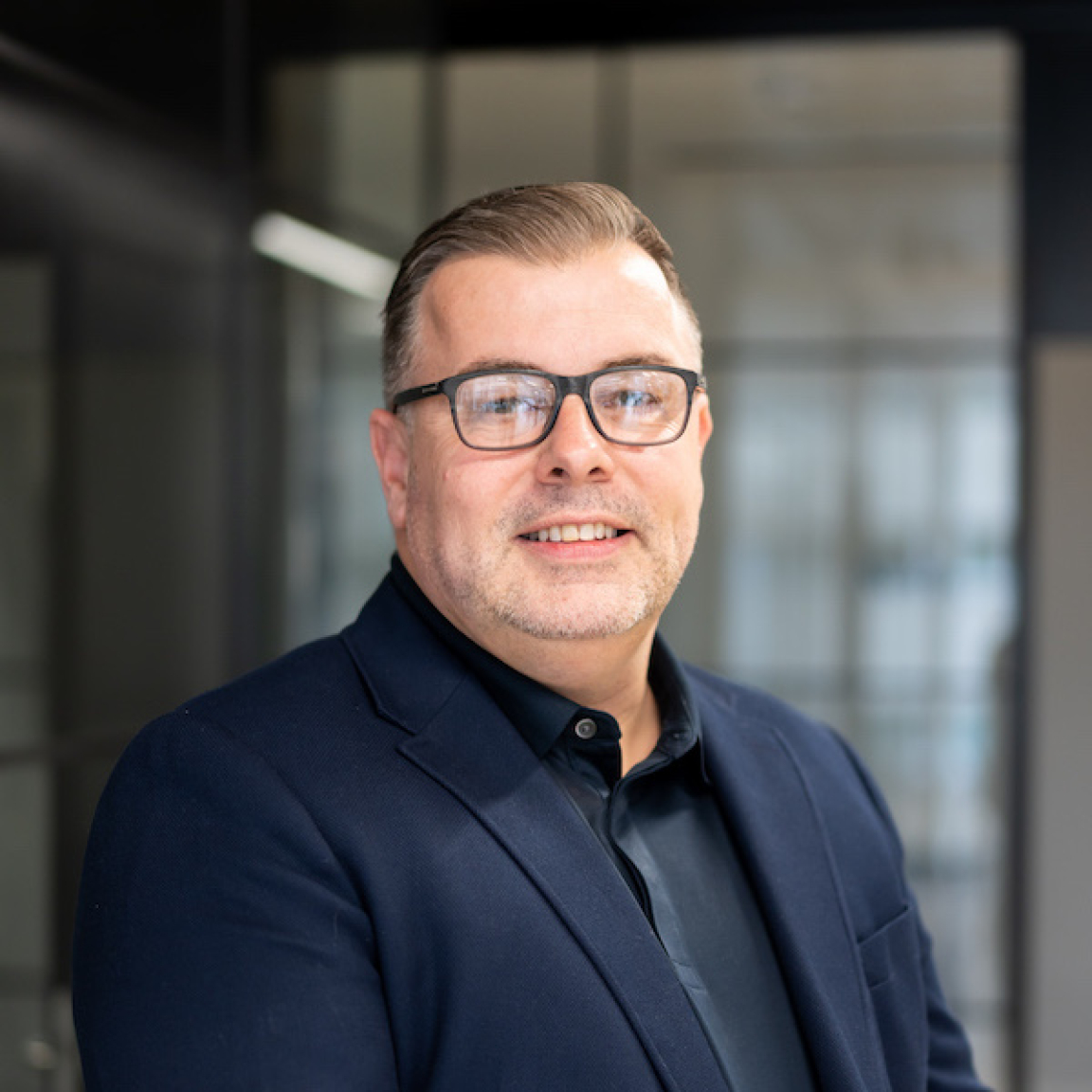
Andrew Sim, Key Account Manager, Bathroom Brands Group
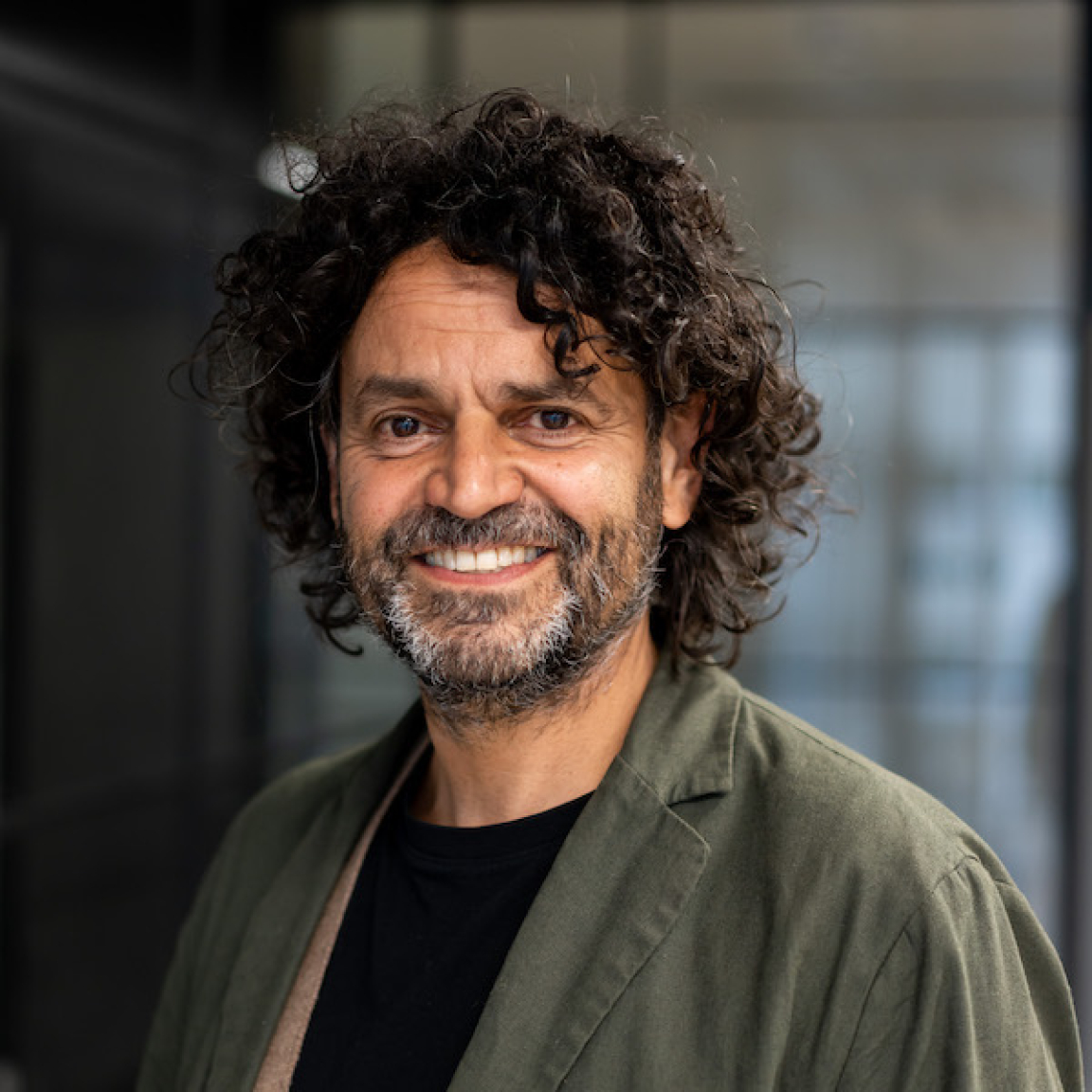
David Smalley, Director, Material Source Studio
David opened the discussion by setting the scene in the post-Covid landscape we now find ourselves in. What are the key elements of best practice in workplace as far as technology is concerned? What are the basic things we need?
Lindsey Wilson, Senior Interior Designer at Atkins, believes that “best practice should connect all the dots”. “We’ve invested heavily in digitisation and the development of apps that collect information across a broad spectrum.”
“Drawing on the connectivity point”, continued Harriet Powell-Hall, Project Architect at AECOM, “we’re sat in AECOM’s brand new, shiny office. The designers and change management team here worked hard in asking what people wanted in returning to the workplace. Connectivity played a big part in that. We are a flexible office, we don’t all work full-time in here. Each space of the office has been designed to connect the virtual team with the team in the office.”
This raised an interesting point around the challenges of the hybrid meeting. David asked, "has anybody got it right?"
The hybrid conundrum
The consensus was that it’s something that’s improving all the time. And if the meeting is completely virtual, or completely in-person, then it works fine. But it’s the mix between the two that’s slightly challenging, mainly in terms of making the people joining virtually feel included.
AECOM has adopted a webcam-based solution that captures the entire table and picks up on who is talking. Though some argued this can be disorientating for those joining a call virtually.
The discussion moved onto the activity of those within the office environment. Though they are present in-person, they may in fact spend the majority of their time in meetings rather than working together as a physical group.
Lorraine Robertson, Director at HLM Architects, suggested that this is actually nothing new. “We used to sit on phones all of the time and you wouldn’t get any of the interaction we are used to now so does the virtual and real have to be merged? Let’s just work with it.”
Perhaps then the solution as to the perfect way of hybrid working doesn’t, and needn’t exist?
Craig Whittet, Head of Department, Product Design Engineering at Glasgow School of Art brings the conversation around to VR, and specifically the programme Gravity Sketch. Could this be the future of hybrid? He thinks it could certainly play a more prominent role in the way architects and designers work. “When we draw, it’s normally a plane that we’re drawing on. But with this, it’s three-dimensional. It’s amazing. The headset syncs your voice to an avatar. And we can use it anywhere, not just in the office.”
David concludes that there are clearly two camps here: those who believe technology relating to hybrid has, and will, always present challenges. And those who see the future being one of virtual reality.
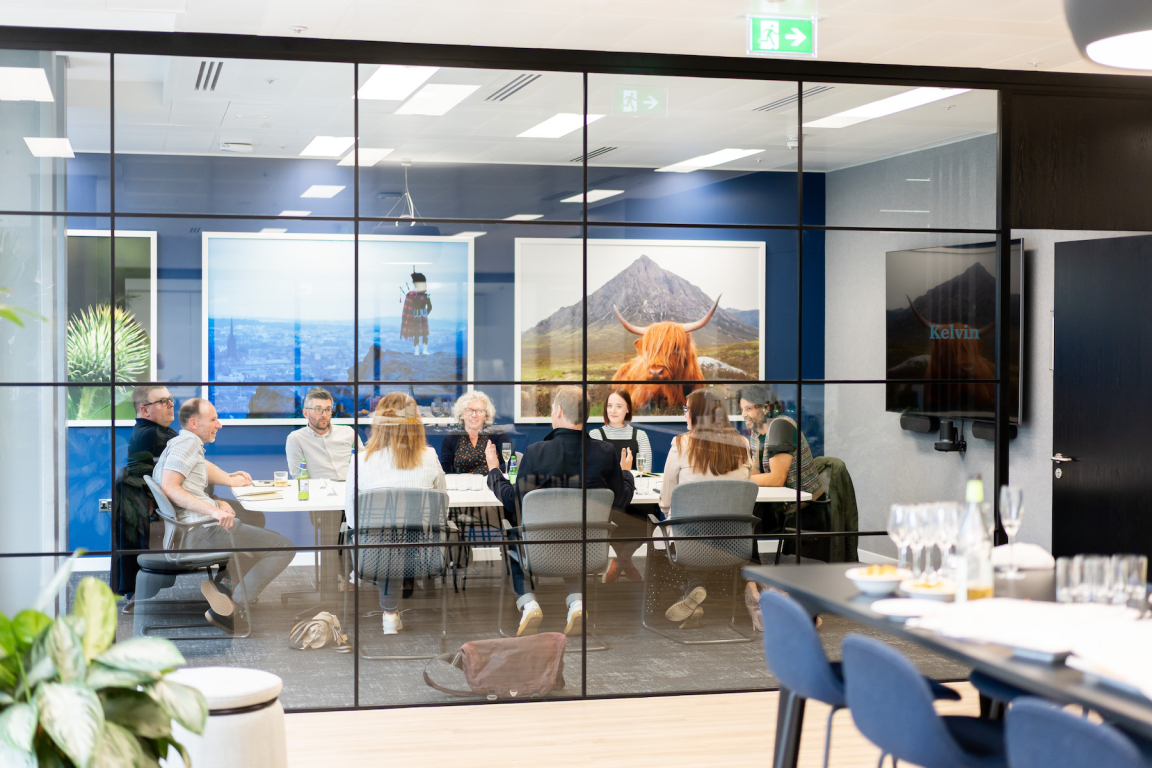
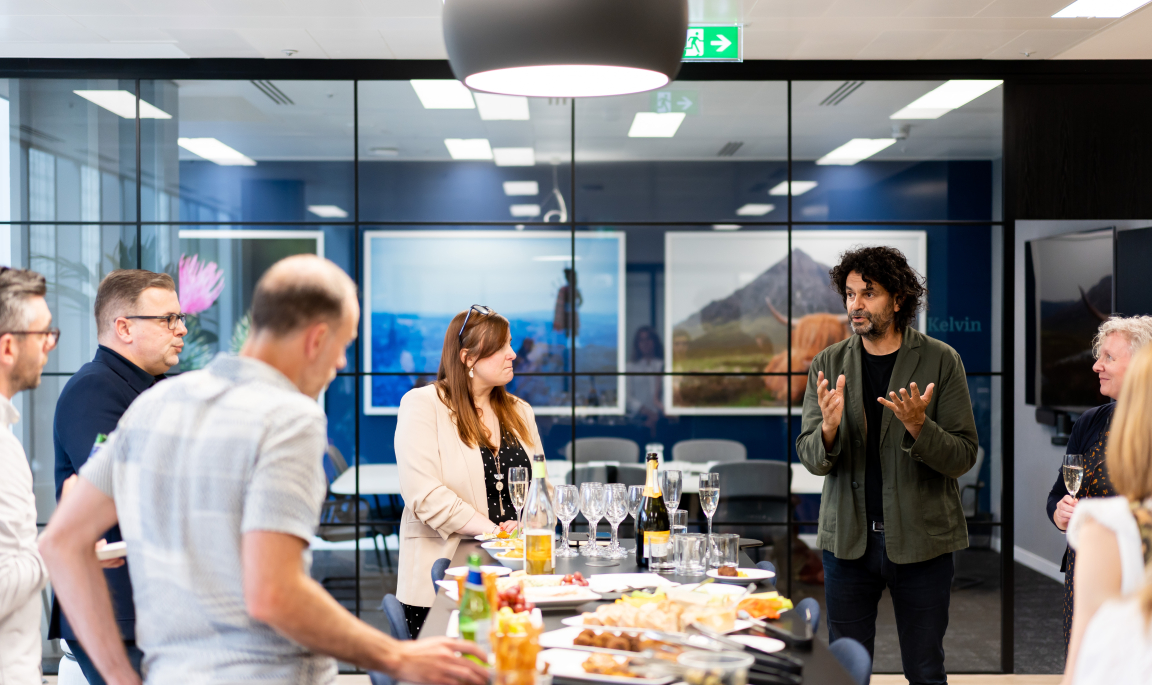
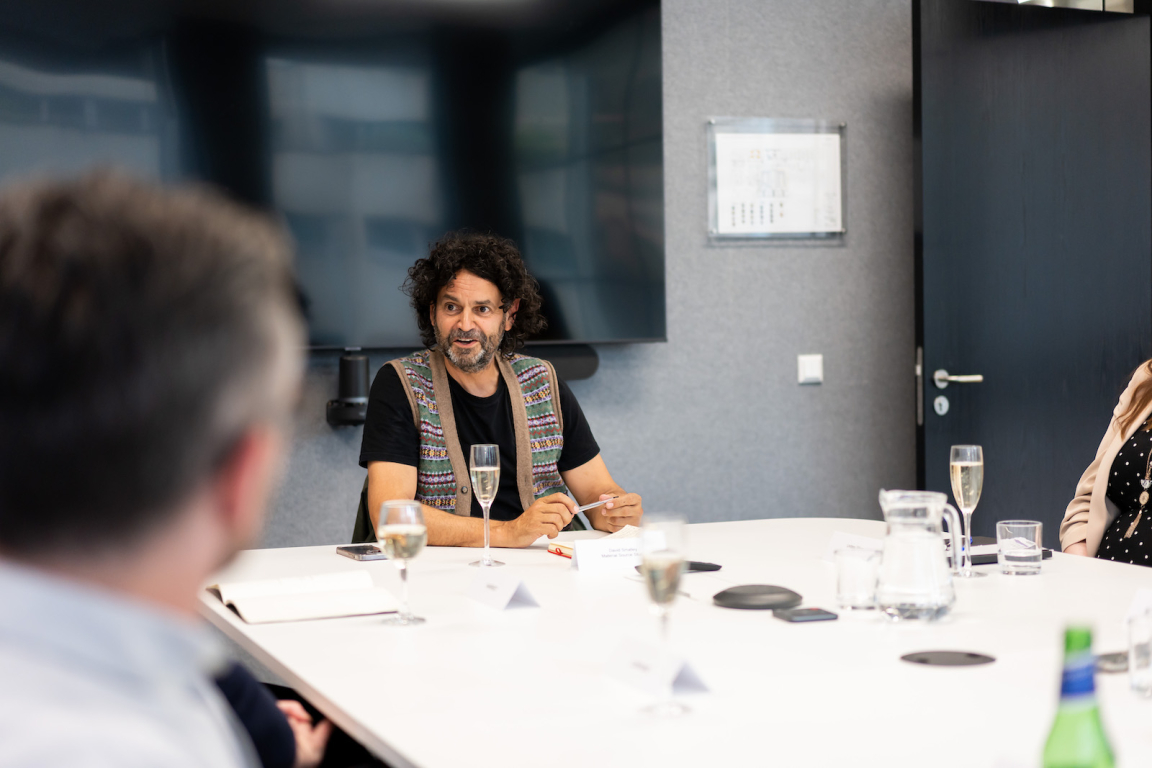
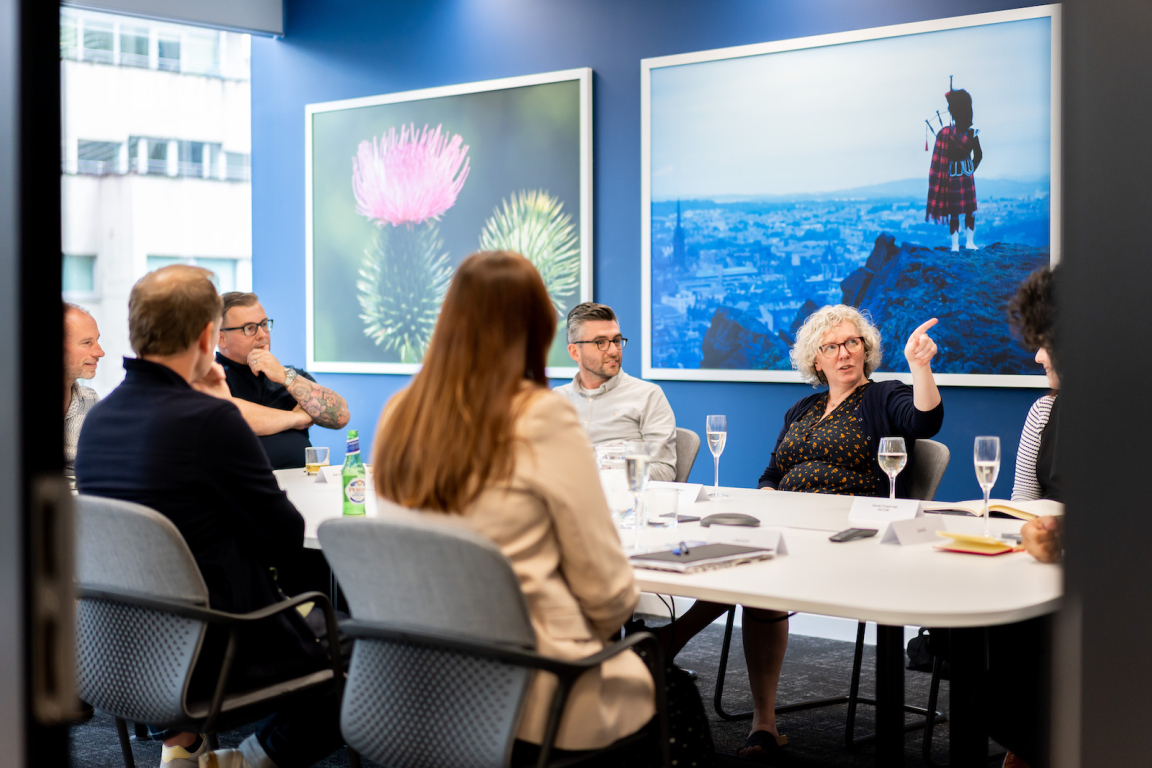
Technology for inclusivity
While hybrid working clearly has its issues, the group agreed that technology has allowed more inclusivity. For example, when faced with the likes of a train strike, rather than miss out on an important meeting, team members can still be a part of it albeit virtually.
Christopher Townsend, Director at RKA, suggested that this is entirely dependent on individual circumstances. “I think the difficulty is in an office space like this, you have fantastic technological facilities. But you’re relying on the person sat in their bedroom to have a decent internet connection and a decent headset, microphone, or camera. Even in the office we struggle with certain people having black spots in their house. Not everyone has the same access to the same level of technology at home.”
With so much variation on the hybrid experience, will it always be a part of workplace as we know it? All agreed we won’t be going back to how things were pre-Covid.
“Workplace has become far more of a sociable environment - Covid has accelerated that in workplace design”, commented David Macintyre, Associate Interior Designer at c2 concepts.
"Has this impacted workspace design?" - asked David.
“Not every workplace is the same”, continued Christopher, “but the majority want more meeting and collaboration spaces now. 80% of a floor plate used to be desks but now it’s almost the opposite.”
The difference between public and private sector workforces was also highlighted, with public sector workers said to be more reluctant to return to a dedicated central working environment.
And looking outside of just workplace, David queries, "will education always be hybrid?"
“When Covid hit, we had to go digital overnight, but you could see the impact that was having”, replied Craig. “A lot of us made the mistake that students wanted to be at home, but many didn’t, they were isolated and downright lonely.
“We managed to open our studios in a rota system quite early on and the uptake was incredible. We then realised that the studio was a social venue. Work could be done anywhere really, but you could see the formation of friendship groups, and conversations flourishing. At GSA we are now 90% face-to-face. As a university, we’re probably at 75%.”
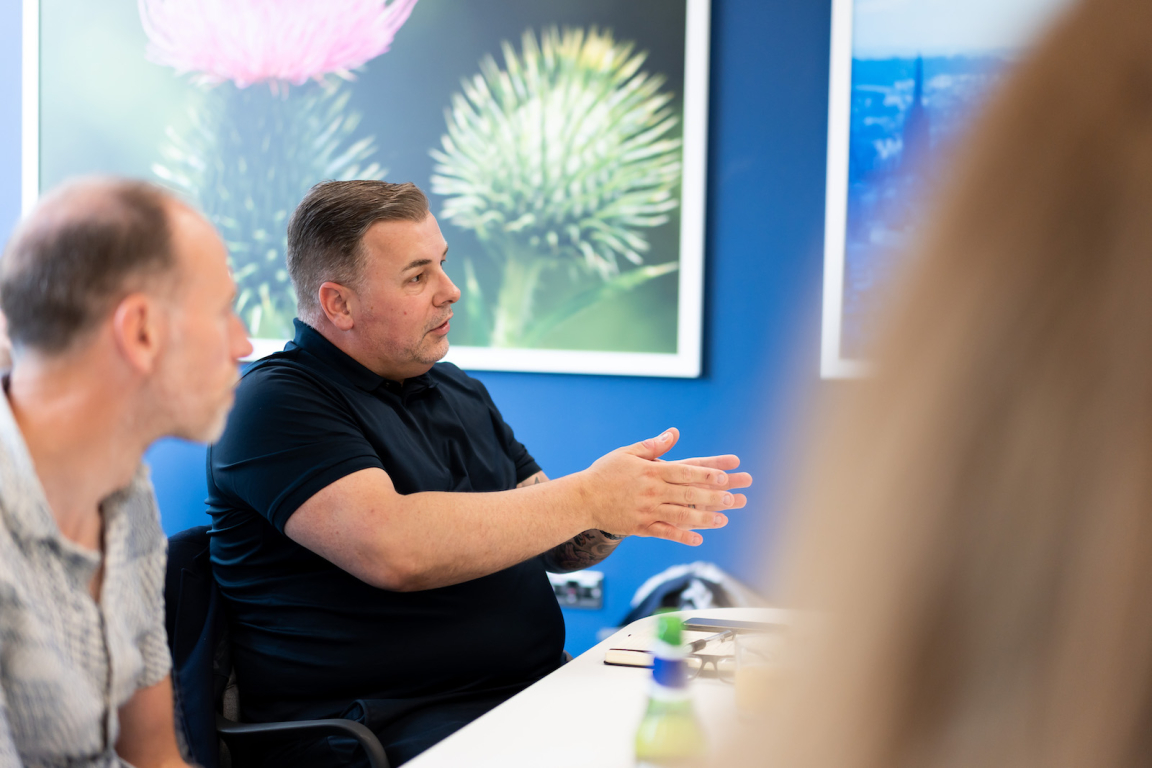
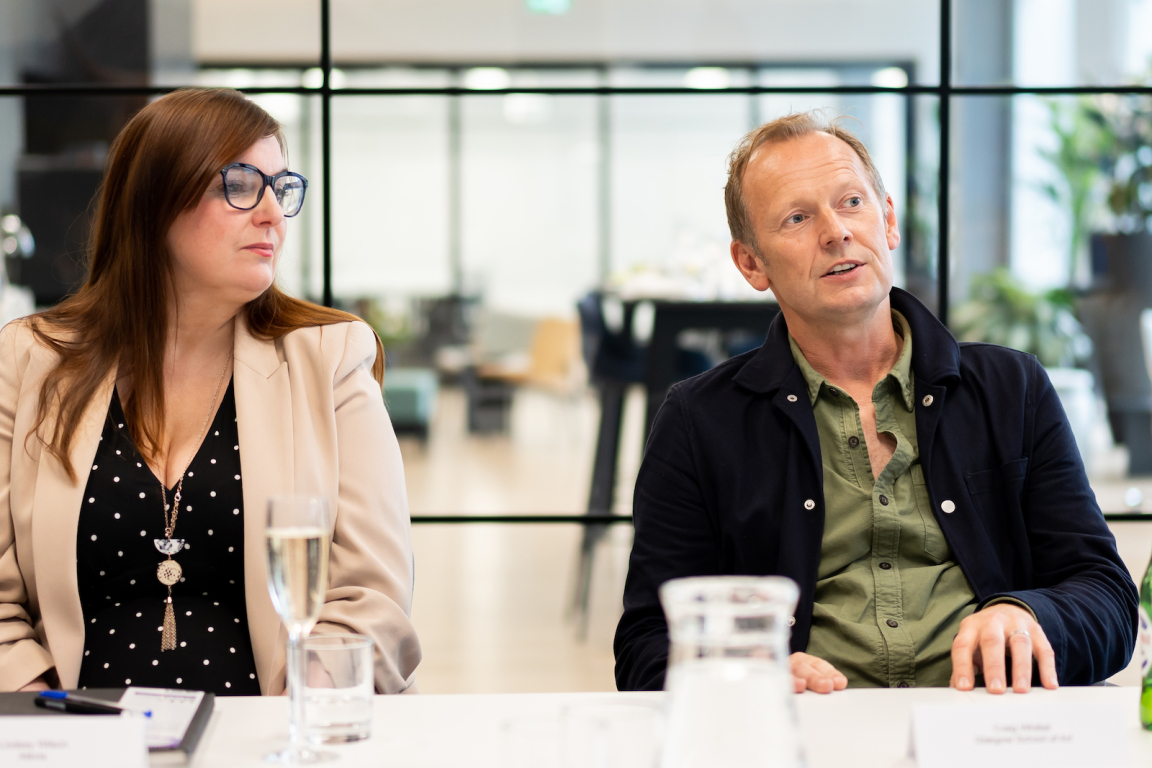
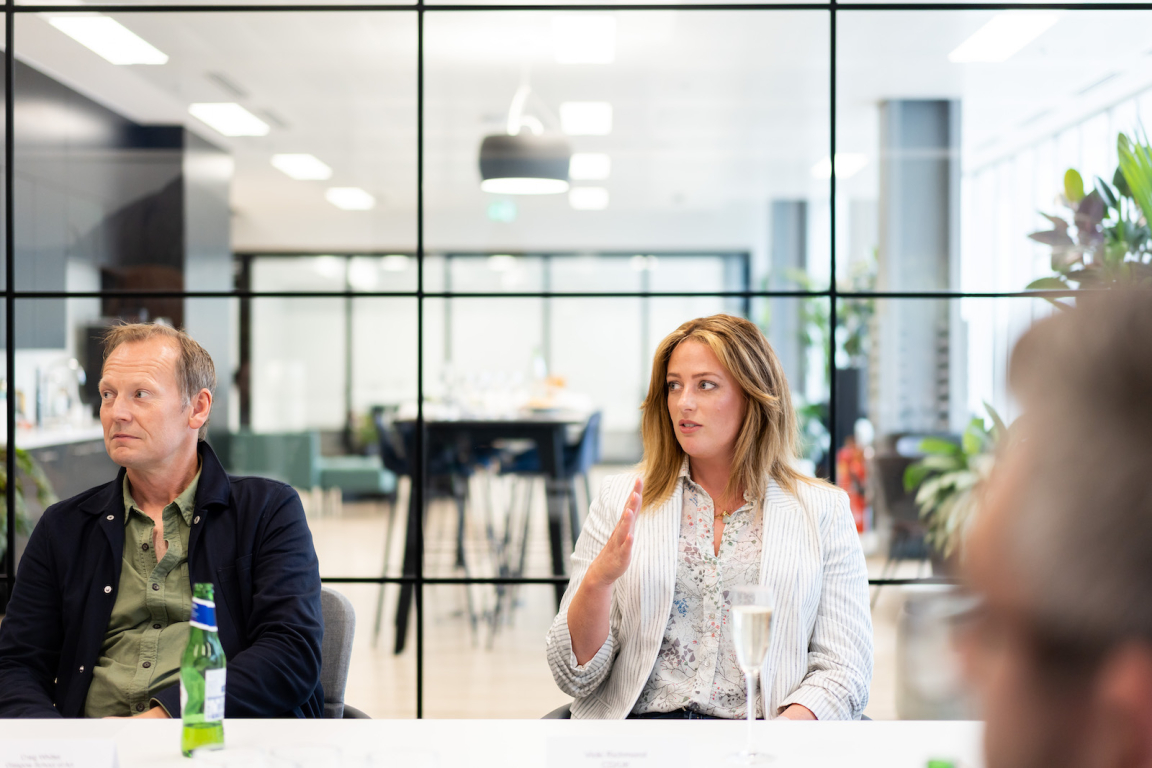
Technology that monitors
David brought the discussion to the topic of sensors in workplace design, asking: “how common is it”?
"It’s very common”, responded Lindsey. “Simply because you can gather data instantly and you don’t need to wait to capture utilisation anymore.”
“There’s also the element of monitoring how a space feels”, continued Lorraine. “We’ve done a study on a couple of buildings where we’ve put sensors in that respond to an app/wearables to find out who’s using what, and importantly, why are they using the space. All of this data comes together to make a very important piece of information. Through this data, we can actually lock certain floors off that people aren’t using to improve energy efficiency.”
Craig has also trialled sensors, for the care sector. “This was very much about independent living, and giving people control over their own destiny, so to speak, through them being able to live in their own home. The technology we used was quite incredible – it was able to recognise someones' heart signature, which is as unique as your fingerprint – and from that determine how safe a person is in their own environment.
“We could also track changes in temperature. When we get stressed, our heartrate might increase but the surface temperature of our skin may decrease. So it’s looking at how we use these signals that we may not necessarily even be aware of.”
Christopher added, “In an office, it’s a real balance to find a temperature that works for everyone. There’s a level of personalisation needed. According to a study by Cornell University, 25°C is the optimum temperature that your brain needs to be at for creativity.”
“With data collection now everywhere, we need to be asking the right questions”, commented Harriet. “I attended a feminist urbanism lecture in Edinburgh recently and they were talking about these gender data gaps – I’m sure there are many other data gaps across the board – the concern with this data is, who is inputting it? Who’s asking the questions? And where’s the bias? I’m all for this new technology but I worry there will be inherent bias before we’ve even begun.”
So, clearly, there is lots of data being collected, but David asked whether the group had any experiences of where data is being effectively used.
Lindsey replied, “We can input our data into a variety of different frameworks, including the RIBA stage of works. We can collect data and can come in at any point within the RIBA stage of works and influence or change the sustainability or wellness targets – it can move the project along in real-time.”
"Who’s using all this data?" asked David.
“I guess it depends what kind of data it is”, said Lorraine. “If it’s to do with finding out which parts of the building are not being used, from an energy efficiency aspect, then it might be the client that has all of these targets to meet.
“We’ve done digital twins which allows you to question if we do this, what impact does it have. And then you can use this data to change the behaviour of the people using the building, because it’s the behaviours that cause the issues. We have a building where a couple of people came in over the Christmas holidays and were on two different floors. The heating of that building is on in its entirety because two people were using it.
“Importantly, when you hand over these buildings with all of this technology, the next tenants must be educated on it.”
While this type of technology exists and is being used to monitor and to some extent control energy usage, the group argued it is very much in its infancy, with so much more that can be done.
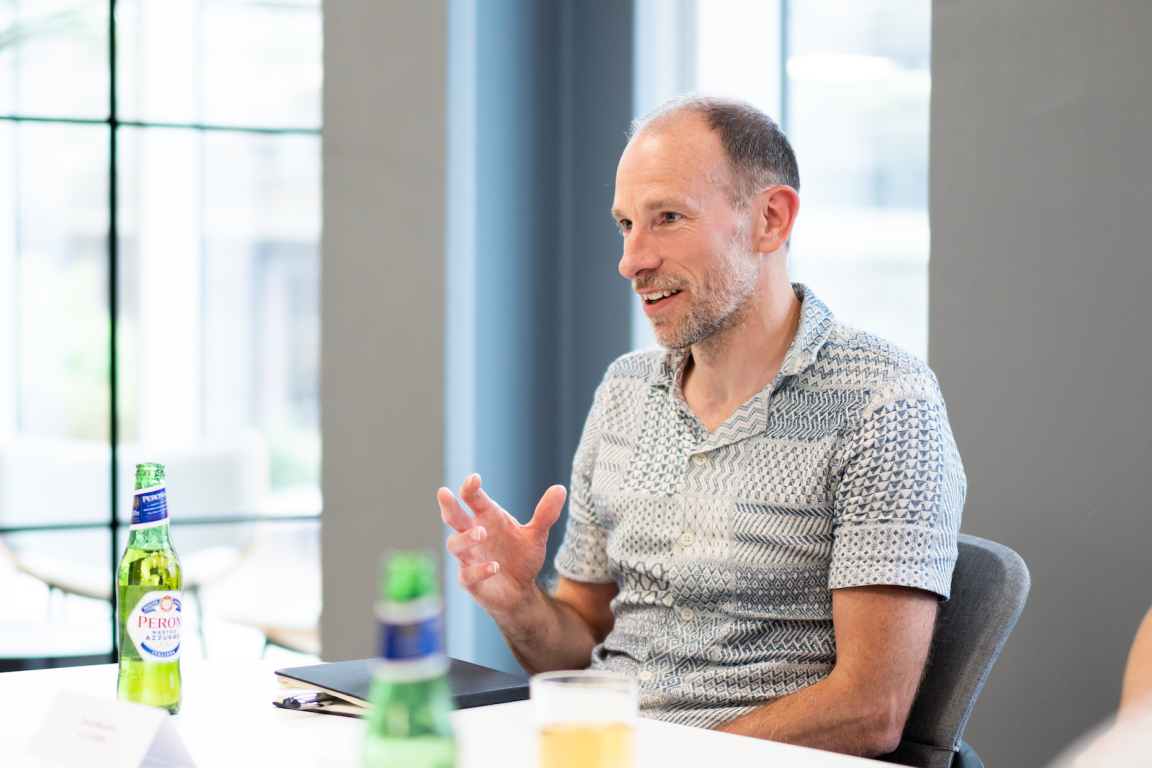
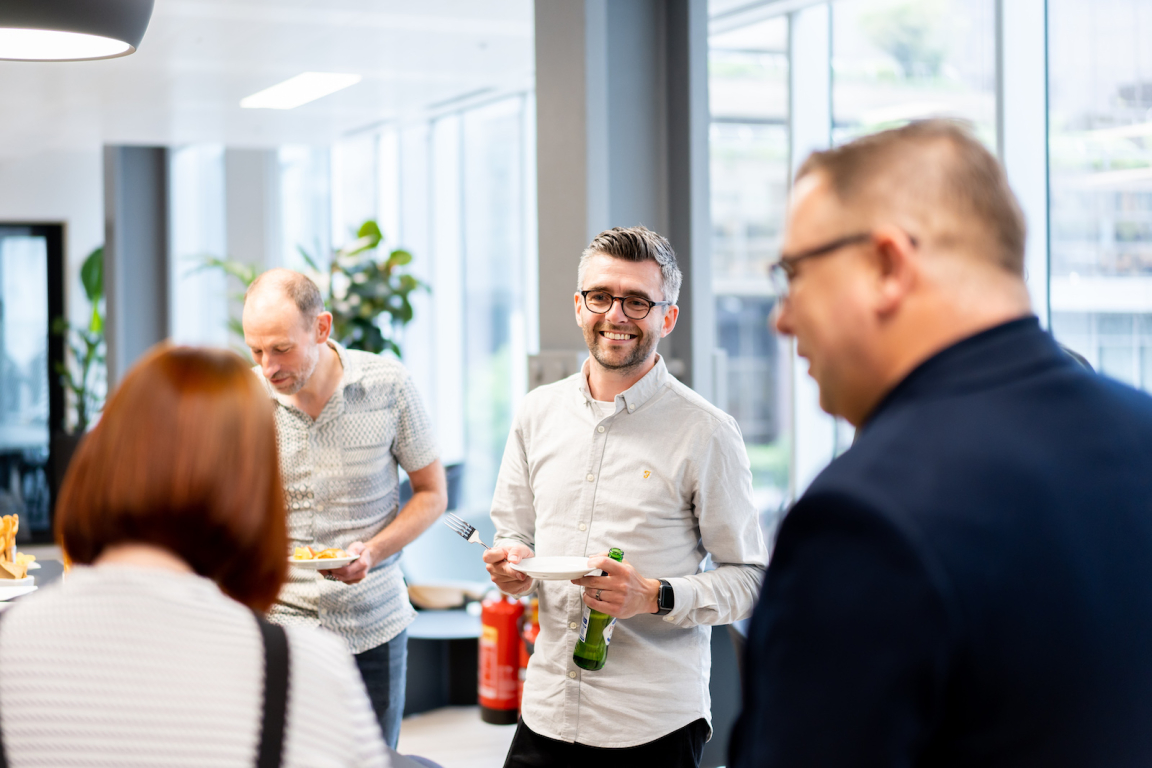
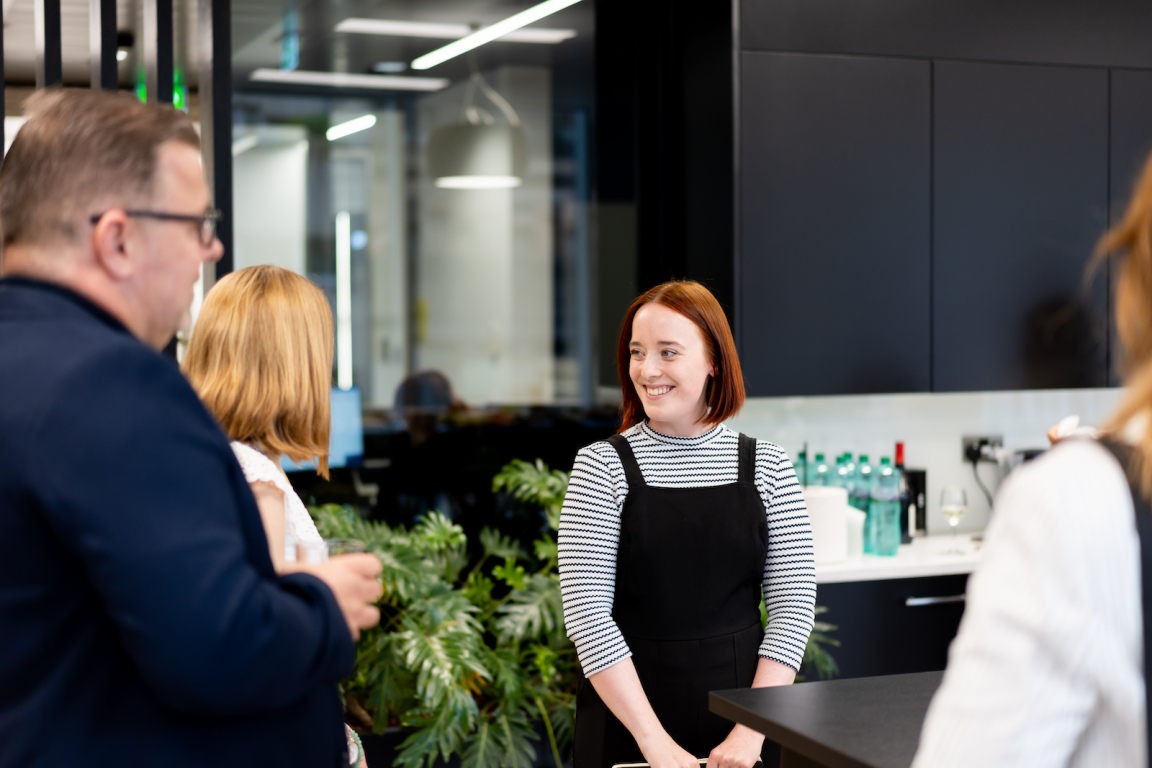
Culture impacting technology
Focusing on workplace culture, David asked, “does the culture of the office impact what technology should be around?”
Lindsey answered “yes”. “We did a case study where only 10% of the whole office was to have desks with the rest of the space to be designated to different zones. Before it was approx. 60%. This was kind of groundbreaking, and it opened up discussions as to why you go to the office and what else the office can be. It shows you there are companies thinking differently.”
“Because we have offices in Glasgow and offices in St Andrews”, added Christopher, “technology allows us to forge and retain single office culture, even though we have two separate offices. We do a lot of Monday morning meetings and Friday reviews; it helps to keep everyone as one team together.”
Craig honed in on the mental health element of culture impacting the space his team and students operates in. “We find having private space for confidential discussion is really important. Having quiet space for a student to go for a call is extremely important. An art school environment lends itself to be very open plan. So we are looking into quiet spaces. And that could already been an office. I don’t have any sense of ownership of my office since it might need to go at any given time."
Rounding off the discussion, Craig emphasised the importance of getting the basics right: “What I really require to work effectively is communication or connectivity. A reliable Wi-Fi network is still so important.”
Top takeaways
Hybrid working is here to stay, but technology hasn’t yet sufficiently joined up the dots for hybrid meetings to run seamlessly
VR is becoming more prevalent in the daily lives of architects and designers
Sensors can be a force for positive change – as long as the data is handled fairly – inherent bias must be recognised and avoided
Ultimately, the most important aspect of technology and workplace is getting the basics right, starting with a reliable Wi-Fi connection for all
Our thanks go to all our roundtable guests, and our partners and supporters for the evening CDUK & Crosswater.
All image credits: Victoria Middleton





